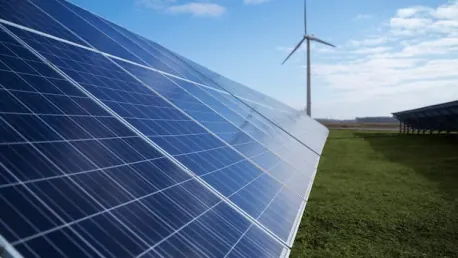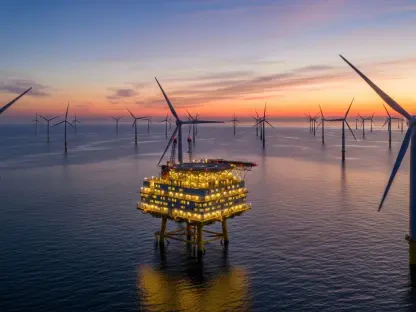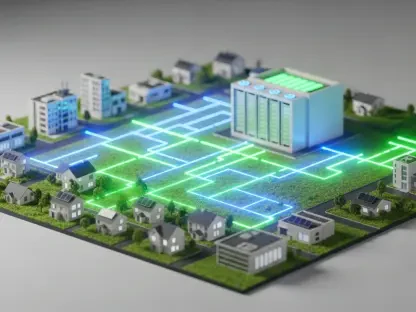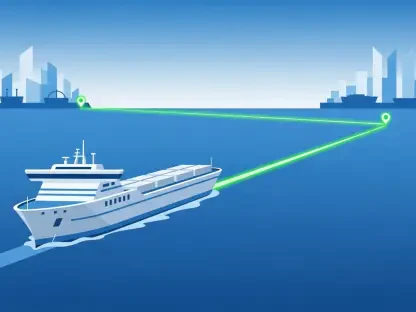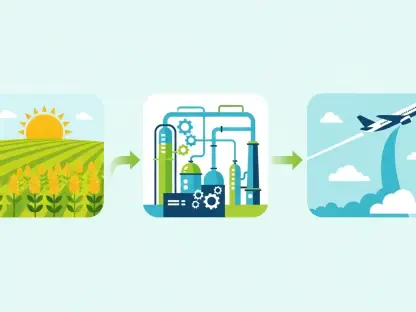Christopher Hailstone, with a wealth of experience in energy management, renewable energy, and electricity delivery, is here to share his insights. As an expert in grid reliability and security, Hailstone provides a clear-eyed view of the latest developments in clean energy. We will explore the key findings of recent reports, delve into the rise of solar power, and consider emerging challenges and opportunities in the renewable energy sector.
What are the main highlights from Ember’s new report on clean energy?
Ember’s new report highlights a significant milestone—clean energy providing 40% of the world’s electricity last year, a figure not seen since the 1940s. This achievement is anchored by the remarkable rise of solar power, which has doubled in just three years and continues to be the fastest-growing electricity source. Wind and nuclear power have also made notable contributions, with wind now providing 8% and nuclear 9% of global electricity.
How significant is it that clean power provided 40% of the world’s electricity last year?
Reaching 40% is hugely significant as it signals a substantial shift from fossil fuels to cleaner sources of energy. This milestone underscores the accelerating adoption of renewable energy and the vital role it plays in reducing greenhouse gas emissions and combating climate change. Such progress is essential for meeting global climate targets and can pave the way for even more rapid advancements in clean energy technologies.
What factors have contributed to the rapid rise of solar power in recent years?
Several factors have fueled the rapid rise of solar power. Technological advancements have led to significant cost reductions, making solar more affordable and accessible. Government policies and incentives have also played a crucial role in encouraging the adoption of solar installations. Additionally, increased environmental awareness and the growing demand for sustainable energy solutions among consumers and businesses have driven this growth.
Can you provide more details on how solar power has doubled in just three years?
The doubling of solar power in such a short time reflects global efforts to scale up renewable energy infrastructure. Investments in large-scale solar farms, coupled with advancements in photovoltaic technology, have significantly boosted capacity. Countries like China have led this expansion, installing vast amounts of new solar panels and integrating more solar energy into their grids. This rapid scaling demonstrates the sector’s potential to meet the growing energy demands sustainably.
How does solar power compare to other renewable sources like wind and hydropower in terms of growth?
While solar power has seen the quickest growth, wind power has also expanded steadily and now provides 8% of global electricity. Hydropower, being the oldest and largest renewable source, has had a slower growth rate and currently accounts for 14%. Each of these sources has unique advantages and challenges, but solar’s rapid scalability and decreasing costs have positioned it as a key player in the renewable energy landscape.
What role does nuclear energy play in the clean energy landscape?
Nuclear energy is a vital player because it produces almost zero greenhouse gases. It offers a reliable, consistent power supply, essential for grid stability and capacity. However, challenges such as high costs, long development timelines, and public concerns about safety and waste management continue to affect its expansion.
With hydropower being the oldest and largest single source of renewable power, why has its growth stagnated at 14%?
Hydropower’s stagnation can be attributed to geographic and environmental limitations. The best sites for new hydroelectric projects have often already been developed, and the construction of new dams faces significant environmental and social concerns. Additionally, hydropower projects can be capital-intensive and time-consuming to construct, which slows growth compared to other renewable sources.
Phil MacDonald mentioned pairing solar with battery storage. How critical is this combination for future clean energy strategies?
Pairing solar with battery storage is crucial for future clean energy strategies because it addresses solar power’s intermittency. Battery storage allows excess energy produced during sunny periods to be stored and used when production is low, such as at night or during cloudy weather. This combination enhances grid reliability and ensures a consistent power supply, making solar a more dependable component of the energy mix.
What challenges and opportunities do you foresee for solar power becoming an “unstoppable force”?
The main challenges include further reducing costs, improving efficiency, and addressing land use and grid integration issues. Regulatory and policy support must also be consistent to encourage continued growth. However, there are significant opportunities in technological advancements, expanding energy storage solutions, and increasing the deployment of distributed solar systems. Innovation in these areas can help overcome existing barriers and drive solar power toward becoming an “unstoppable force.”
How are countries like China and India leading the way in the energy transition?
China and India are leading the energy transition through substantial investments in renewable energy infrastructure. China, in particular, has rapidly expanded its solar capacity, contributing more than half of the world’s new solar electricity last year. Both countries recognize the importance of reducing reliance on fossil fuels to improve air quality and meet climate goals, and their large-scale project developments are setting a powerful example for other nations.
More than half of the world’s new solar electricity came from China last year. What does this signify for global clean energy efforts?
China’s leading role in adding new solar electricity signifies a major shift in the global energy dynamic. It reflects the country’s commitment to becoming a leader in clean energy and highlights the growing importance of renewable energy in addressing climate change. This trend indicates that large-scale adoption of renewables is not only feasible but necessary for global clean energy efforts.
Despite the growth in clean power, why did electricity from fossil fuels still increase last year?
The rise in electricity consumption, driven by rapid urbanization, industrialization, and technological advancements, has outpaced the growth of clean energy. Fossil fuels are often used to meet the surge in demand, especially in regions where renewable infrastructure is not yet fully developed. Additionally, existing fossil fuel plants may continue operating to ensure a stable and reliable power supply.
What role did the increasing demand for AI, electric vehicles, and heat pumps play in this trend?
The increasing demand for AI, electric vehicles, and heat pumps has contributed significantly to the rise in electricity consumption. These technologies are energy-intensive and require substantial power for their operation, leading to higher overall electricity demand. As these sectors grow, ensuring that their energy needs are met sustainably becomes increasingly critical.
How did recent heatwaves and climate phenomena like El Nino affect electricity demand and emissions?
Recent heatwaves and climate phenomena like El Nino have significantly spiked electricity demand, primarily due to the increased use of air conditioning to cope with extreme temperatures. This surge has led to higher emissions, as fossil fuel-based power plants are often brought online to meet the demand, which undermines efforts to reduce overall greenhouse gas emissions.
With Ember’s prediction that emissions would peak in 2023, what does the recent rise in emissions indicate?
The recent rise in emissions indicates that meeting the peak emissions target is more challenging than anticipated. It highlights the need for more aggressive measures to increase renewable energy adoption, enhance energy efficiency, and manage demand to achieve the desired reduction in emissions. This trend underscores the urgency of scaling up clean energy solutions and adopting more stringent policies to curb emissions.
How does Ember forecast the growth in clean power will impact the displacement of fossil fuels from the system?
Ember forecasts that as clean power continues to grow, it will increasingly displace fossil fuels from the energy system. This shift will be driven by the ongoing decrease in renewable energy costs, technological advancements, and enhanced energy storage capabilities. Over time, the growing share of renewables is expected to reduce reliance on fossil fuels, leading to lower carbon emissions and a cleaner, more sustainable energy future.
According to Bruce Douglas, what were the major achievements of the renewables industry last year?
Bruce Douglas highlighted that the renewables industry added 858 TWh of generation to the system, surpassing the combined annual electricity consumption of the UK and France. This achievement showcases the sector’s resilience and growth despite geopolitical and economic challenges. The ability to expand clean energy capacity significantly is a clear indication of the industry’s pivotal role in addressing global energy demands sustainably.
Can you elaborate on the geopolitical and economic headwinds faced by the renewables industry?
The renewables industry faces various geopolitical and economic headwinds, including trade tensions, regulatory uncertainties, and fluctuating policies. Economic challenges such as financing, investment risk, and competition from cheap fossil fuels can also hinder growth. However, with strategic planning, supportive policies, and international cooperation, these obstacles can be navigated successfully.
Do you have any advice for our readers?
My advice is to stay informed and engaged with the developments in the renewable energy sector. Support policies and initiatives that promote clean energy, and consider adopting renewable energy solutions in your own lives, such as installing solar panels or advocating for sustainable practices within your communities. Every effort counts in transitioning to a more sustainable and resilient energy future.
